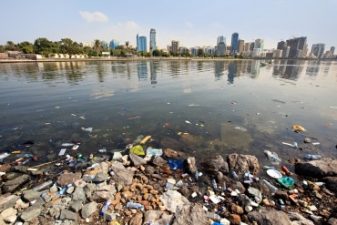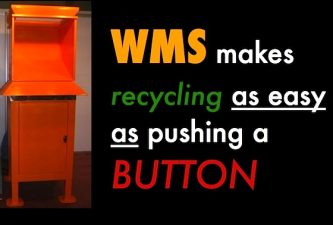 World Oceans Day is June 8th – here’s someone who could be it’s Grand Marshall.
World Oceans Day is June 8th – here’s someone who could be it’s Grand Marshall.
Two years back, Green Prophet ran a story about a Dutch engineering student who devised a way to siphon off the gargantuan plastic garbage patches (called gyres) growing unchecked in our seas. Then-19-year-old Boyan Slat claimed his floating “Ocean Cleanup Array”, developed with classmate Tan Nguyen, could clean up each gyre in about 5 years, removing millions of tons of plastic powered by sunshine and using natural ocean currents. Turns out the kid wasn’t just a flash in the eco-pan.
Since the initial press buzz that followed his first TedTalk in 2012, he’s completed a year-long feasibility study which concluded that the design is a feasible means of cleaning up nearly half the Great Pacific Garbage Patch within a decade. He’s also entered into agreement with Japanese authorities for a two-year pilot to be launched before summer 2016 off the coast of Tsushima, an island between Japan and South Korea, where the Ocean Cleanup’s trash removal capabilities will be put through its paces.
Ocean waste washes up on Tsushima’s shoreline at a rate of over 35 cubic feet per capita per year. Officials are considering proposals to use that waste as a new energy source for the population of about 35,000.
 The pilot will feature floating booms spanning an estimated 1.2 miles across the sea surface, making it the longest floating structure in history. Collection platforms will be anchored to the sea bed. Water moves debris into the floating booms, which are angled according to surface currents; they replace net technology, ensuring near-zero fish by-catch.
The pilot will feature floating booms spanning an estimated 1.2 miles across the sea surface, making it the longest floating structure in history. Collection platforms will be anchored to the sea bed. Water moves debris into the floating booms, which are angled according to surface currents; they replace net technology, ensuring near-zero fish by-catch.
Garbage is funneled towards the processing platforms where it’s separated from plankton, dewatered, and stored in containers until collected for upland recycling.
If it extracts floating plastics as planned, the team plans to deploy a “62-mile-long array that will be capable of capturing about half of the trash in the Great Pacific Garbage Patch” over the course of a decade, according to Al Jazeera. That’s an estimated 70,320,000 kg of trash, implying a cleanup cost of about $5 per kilo, or $2 per pound.
In August, he will conduct a “Mega Expedition,” leading fifty ships between Hawaii and California in the first-ever effort to create a high-resolution map of oceanic plastic deposits. In a press release, Slat claims the expedition will “collect more plastic measurements in three weeks than have been collected in the past 40 years combined.”
Listen to Slat explain himself in this 2014 clip:
[youtube]https://youtu.be/QpDxE8BhPSM[/youtube]
It’s a fairly simple idea, but in practice, the size and scale of the Ocean Cleanup Array is staggering. There are known flaws (the array cannot capture microplastics), and even if effective, it’s still just part of the solution. Says Slat, “It is of paramount importance to also ‘close the tap’, to prevent more plastic from entering the oceans in the first place.” That includes reducing our own plastic consumption and urging manufacturers and policy makers to tackle the issues on land.
Waterborne pollution affects Middle East shorelines from Israel to Oman, even Jordan’s minuscule Red Sea coastline is dotted with plastic. It’s only by trialing new ideas that a solution will be found. And while he moves forward, do your part. Cut down your use of single-use plastics, and recycle.
Check out his website to see how you can support his work.





One thought on ““The Largest Cleanup In History” – will Boyan Slat’s Ocean Cleanup Array scour plastic from the seas?”
Comments are closed.